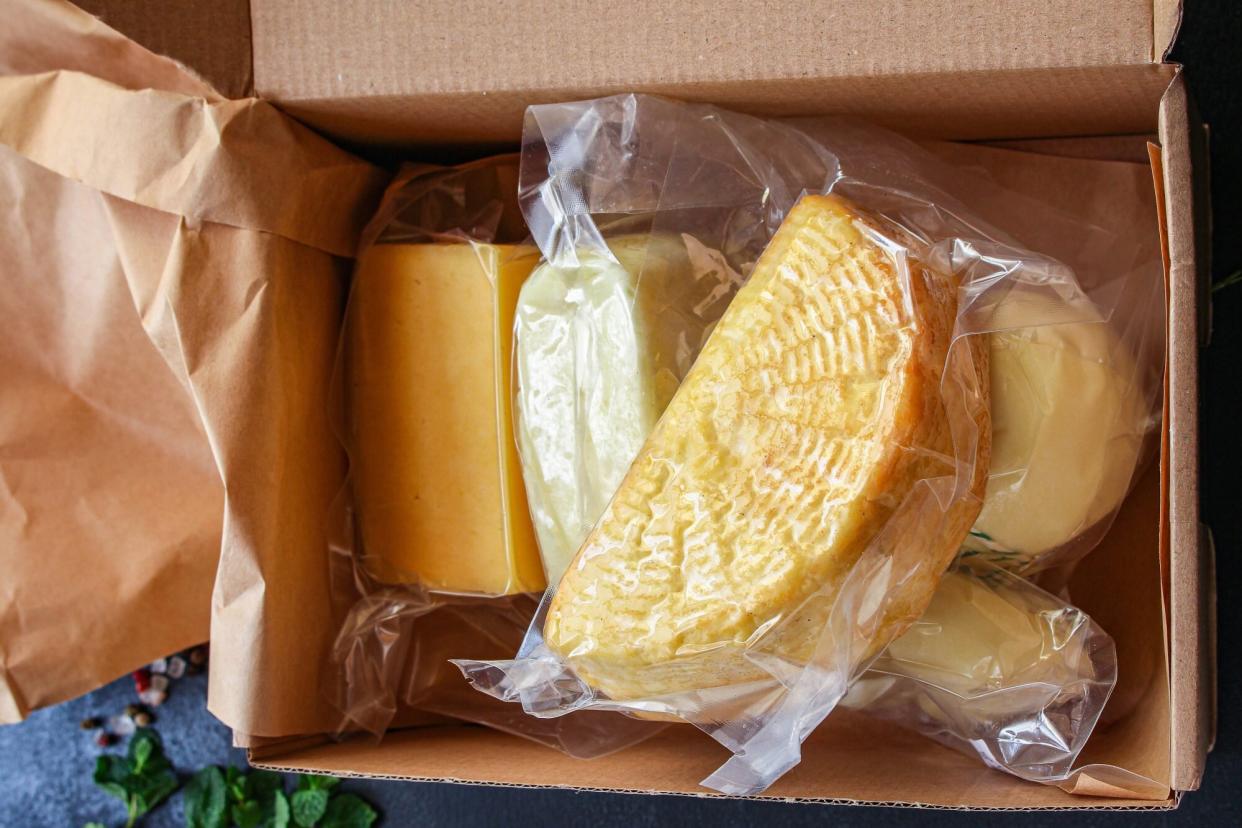Here's Why You Should Never Store Cheese In Its Plastic Wrapper

Getty/a-lesa
We can all benefit from some big cheese knowledge, but who do you turn to when you need all the facts on Parmesan, Gruyere, and Cheddar? Raymond Hook. He's been in the cheese business since 1984 and is in the midst of opening Capella Cheese, his gourmet shop in Atlanta, where customers will be able to shop over 300 varieties of cheese. He shared with us a slew of tips and tidbits about cheese storage. After all, there's no point in building a phenomenal charcuterie board filled with loads of cheeses if it's not going to taste as good as it looks.
Hook says there are two mistakes people make when buying and storing cheese. The first is not buying fresh cheese. Hook recommends going to your grocery store deli counter to ask for slices or blocks of cheese, instead of buying them already prepackaged. "If you're making a cheese plate, trim the outside edges that have touched the plastic. That will help improve the flavor greatly," he says.
Plastic is essentially kryptonite for cheese, and according to Hook, that's the second mistake consumers make. If you can, you should avoid buying cheese that is wrapped in plastic wrap. "When cheese ripens, it gives off ammonia. When it is wrapped in cling wrap or film, the ammonia can't escape, so it goes back into the cheese." Hook goes on to explain that for natural rind cheese, the impacts of plastic are just as unappetizing. "There's ambient water in cheeses. If they're wrapped tight, and they're not turned or flipped, it can cause the moisture in the cheese to settle into the rind at the bottom causing wet rind."
The best thing you can do after you make a cheese purchase that's wrapped in plastic is to bring it home and immediately take it out of its plastic wrap. "Wrap it in parchment paper instead, and put it in an oversized [zip-top] bag, so it can still breathe. The refrigerator will keep it from getting too warm," Hook says. When you're ready to eat it, slice the exact amount you want to serve and then wait a little while. According to Hook, you should let your cheese come to room temperature (which should take about an hour). "The flavor in cheese is in the fat. When you eat cold cheese, the oils in the cheese aren't able to coat your entire pallet. They stay tight, and they pass over the top of it."
Finally, be sure to use that cheese drawer. It really does improve the quality of your cheese. "Most cheese drawers have a setting where you can limit the airflow to the cheese. Airflow causes friction, and friction causes dehydration." A humid environment, like in your cheese drawer, will ensure the cheese maintains its natural moisture, making it as flavorful as the cheesemaker intended.

